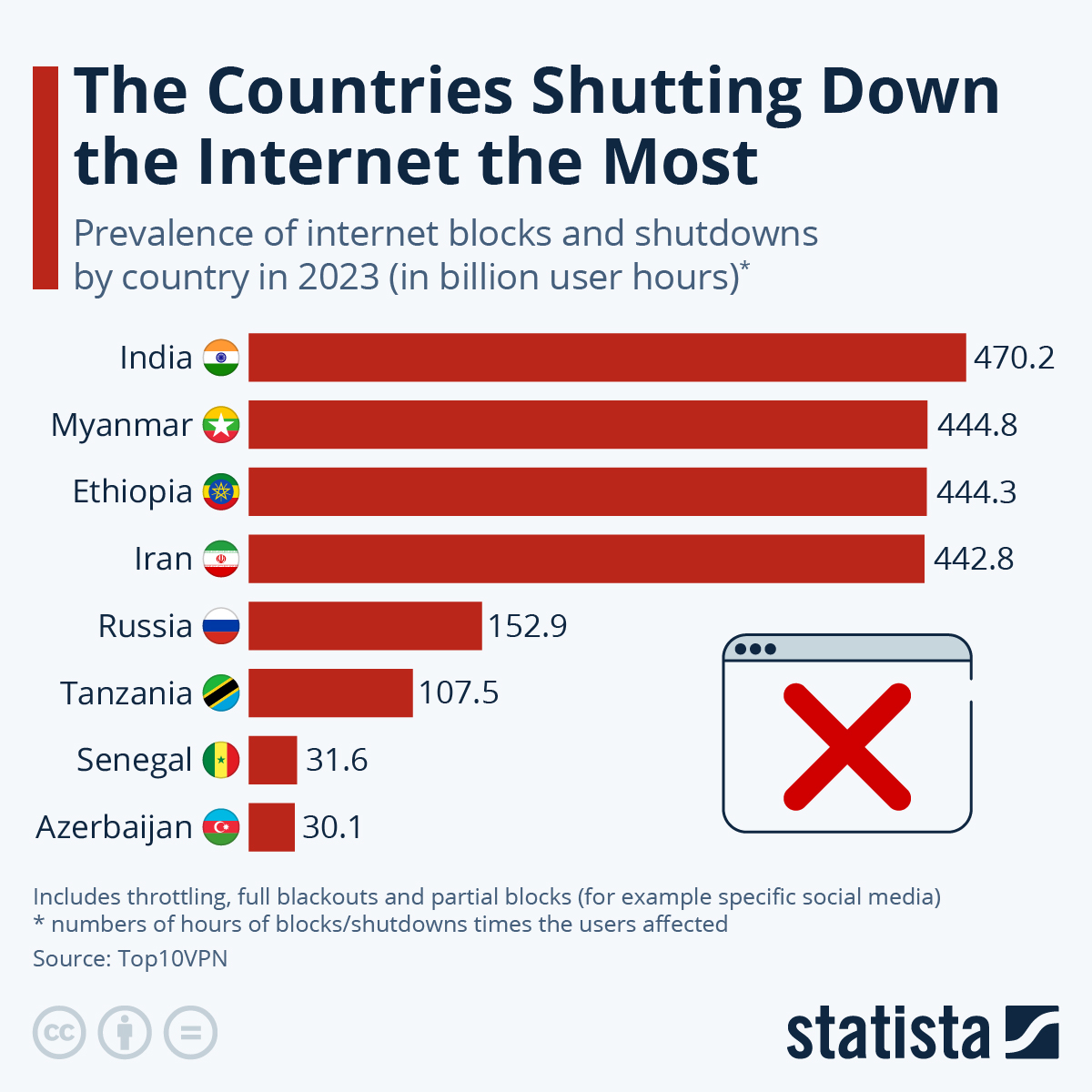In many countries, the drastic step of shutting down the internet is employed in response to actual or potential unrest. Shutdowns generally occur when someone (usually a government) intentionally disrupts the internet or mobile apps. The measure has been widely criticized as too drastic a curbing of freedom of expression and encroachment of peoples’ everyday lives especially if it is done to shut down dissent.
Egypt’s 2011 revolution and the failed Turkish military coup of 2016 are prime examples of internet shutdowns employed in this way. In India – the country that cuts internet access the most – shutdowns cluster in Kashmir, but also in Rajasthan, where they have been used during protests (and preemptively when protests were expected), but also during exams in recent months. Both regions have seen violence tied to tension between Hindus and Muslims, in Kashmir also in connection with the Muslim-led independence movement.
Across the world, internet shutdowns and deliberate slowdowns have become more common once again. According to Access Now data, India has the most shutdowns of any country by a huge distance – 84 in 2022 alone. By comparison, the next highest-ranked countries only counted around 20 shutdowns each. In the case of Ukraine, it wasn’t the country’s government, but invading Russian forces who cut the internet 22 times in order to disrupt communications in 2022.
Given how important the internet has become, limiting access to it can have financial consequences. In India, the huge number of shutdowns and their length are getting very expensive. A report by Top 10 VPN found that around 1,500 hours of intentional internet downtime in 2022 has cost the Indian economy $164 million – rank 6 in the world.
You will find more infographics at Statista




































